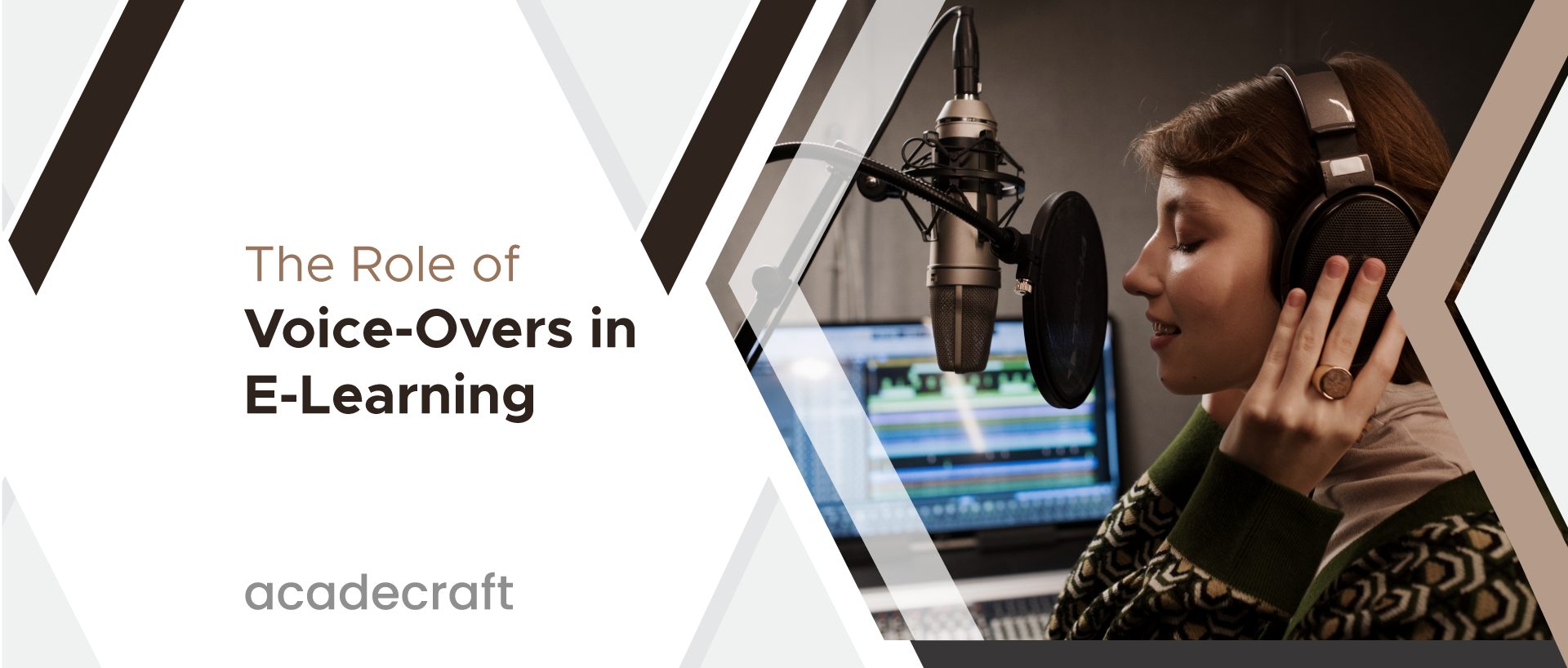
The role of voice-overs in e-learning is far from passive; it's a crucial element that shapes the learning experience. This exploration will analyze how these voices transform digital courses into immersive, engaging educational journeys.
Here, we embark on an expedition to unravel the enchantment of elearning voice-over in the kingdom of e-learning. Continue reading and explore the world of e-learning's growing importance, the whispers of significance that voice-overs carry, and the map to understanding this digital wilderness.
E-learning platforms are digital spaces where learning takes place. They come in various forms, including:
These platforms cater to diverse learning needs, from formal education to corporate training, offering flexibility and accessibility to learners worldwide. For example, imagine a scenario where a student living in a remote village with limited access to traditional educational resources can enroll in an online course through an e-learning platform.
This student can now access high-quality educational materials and interact with educators and fellow students worldwide, breaking down geographical barriers and expanding their learning opportunities. This example shows how e-learning platforms provide flexibility and accessibility, ultimately democratizing education for all.
Audio is a powerful tool in E-learning, enhancing the learning experience in several ways. It facilitates accessibility for visually impaired learners through audio descriptions and screen readers. Moreover, it engages auditory learners and adds a human touch to online courses. Audio can convey emotion, tone, and context, making complex topics more understandable and relatable. By harnessing the power of audio, E-learning becomes more inclusive and effective.
Imagine a corporate elearning company offering an online history course that incorporates audio. As students navigate the course, they can listen to audio descriptions of historical events, allowing visually impaired learners to engage with the content fully.
Auditory learners can benefit from hearing the emotion and tone in the narrator's voice, which adds depth and meaning to the subject matter. This audio element brings a human touch to the online course, making it more relatable and engaging for all learners. By harnessing the power of audio, this e-learning course becomes more inclusive and effective in facilitating learning.
We have suggested a few elearning voice-over tips to help improve your online course experience. First, use a clear and professional tone when recording your voice-over. It will help engage learners and maintain their attention throughout the course.
Read More: Voice-over Recording: Tips and Techniques
When creating e-learning modules, it is important to consider the impact of voice on learning. Our online learning solution works per the instructions or tips provided, such as maintaining consistent audio levels and quality, using script highlighting to emphasize key points, rehearsing the script before recording, and seeking feedback from others; you can enhance the effectiveness of your narration. These techniques help polish your recordings and create a more creative, engaging, and impactful learning experience for your audience.
The impact of voice on learning should not be underestimated. A clear and engaging voice can greatly enhance the effectiveness of e-learning modules. It can capture the learner's attention, convey information effectively, and create a positive learning experience. On the other hand, a monotone or unclear voice can be distracting and hinder the learner's understanding and engagement. Therefore, it is important to pay attention to the quality of your voice recordings and strive for improvement.
For instance, a plain and engaging voice can make it easier for learners to understand difficult programming concepts in an online coding tutorial. The voice can effectively explain coding syntax, provide examples, and guide learners through interactive exercises. On the other hand, a monotone or unclear voice could make it difficult for learners to follow along and understand the intricacies of coding, leading to frustration and decreased motivation to continue learning.
Here's a list of some of the best tools and software for voice-overs that professional voice-over services offer:
In the vast landscape of online learning, voice-overs serve as the compass that directs learners toward their educational goals. They create a sense of connection and engage learners, capturing their attention amidst the distractions of the digital era.
These voice-overs enhance the learning process by giving the material life with each voice command and transforming it into engaging content. The power of voice-overs becomes apparent as we travel through this uncharted territory because they instruct and inspire, igniting a passion for learning and a deep understanding.
Share